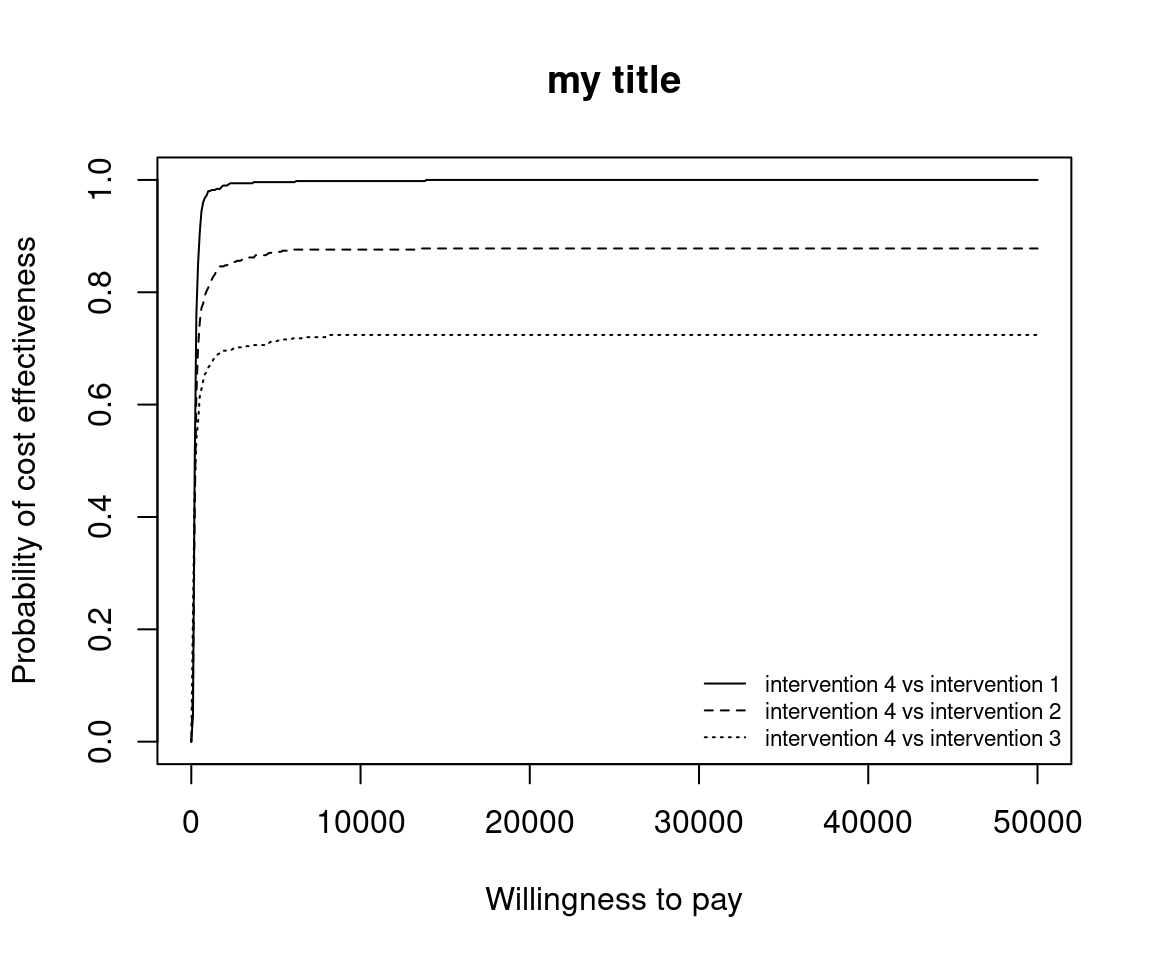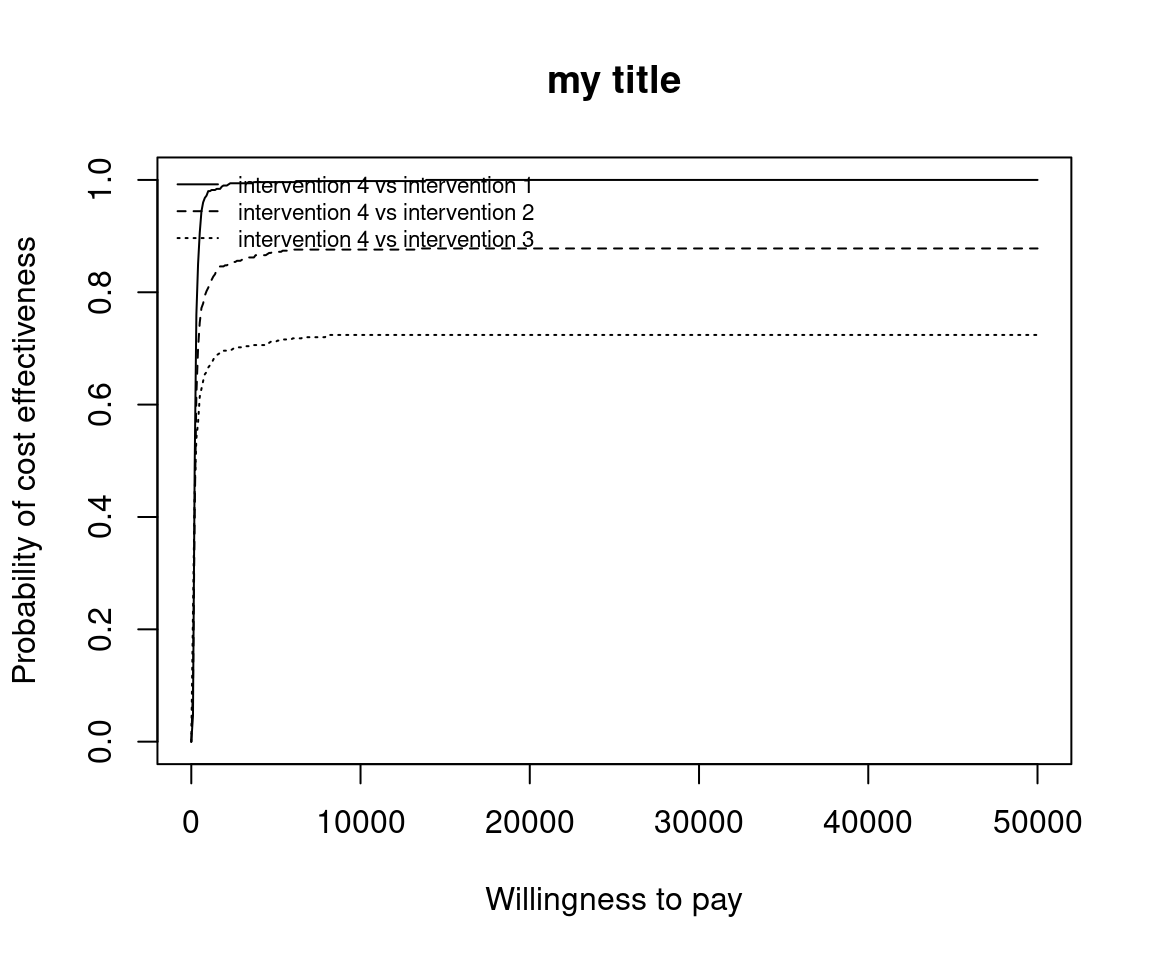data("Vaccine")
he <- bcea(eff, cost)
#> No reference selected. Defaulting to first intervention.
# str(he)
ceac.plot(he)
Gianluca Baio
Nathan Green
September 23, 2020
The intention of this vignette is to show how to plot different styles of cost-effectiveness acceptability curves using the BCEA package.
This is the simplest case, usually an alternative intervention (\(i=1\)) versus status-quo (\(i=0\)).
The plot show the probability that the alternative intervention is cost-effective for each willingness to pay, \(k\),
\[ p(NB_1 \geq NB_0 | k) \mbox{ where } NB_i = ke - c \]
Using the set of \(N\) posterior samples, this is approximated by
\[ \frac{1}{N} \sum_j^N \mathbb{I} (k \Delta e^j - \Delta c^j) \]
To calculate these in BCEA we use the bcea() function.

The plot defaults to base R plotting. Type of plot can be set explicitly using the graph argument.
Other plotting arguments can be specified such as title, line colours and theme.
This situation is when there are more than two interventions to consider. Incremental values can be obtained either always against a fixed reference intervention, such as status-quo, or for all pair-wise comparisons.
Without loss of generality, if we assume that we are interested in intervention \(i=1\), then we wish to calculate
\[ p(NB_1 \geq NB_s | k) \;\; \exists \; s \in S \]
Using the set of \(N\) posterior samples, this is approximated by
\[ \frac{1}{N} \sum_j^N \mathbb{I} (k \Delta e_{1,s}^j - \Delta c_{1,s}^j) \]
This is the default plot for ceac.plot() so we simply follow the same steps as above with the new data set.
Reposition legend.

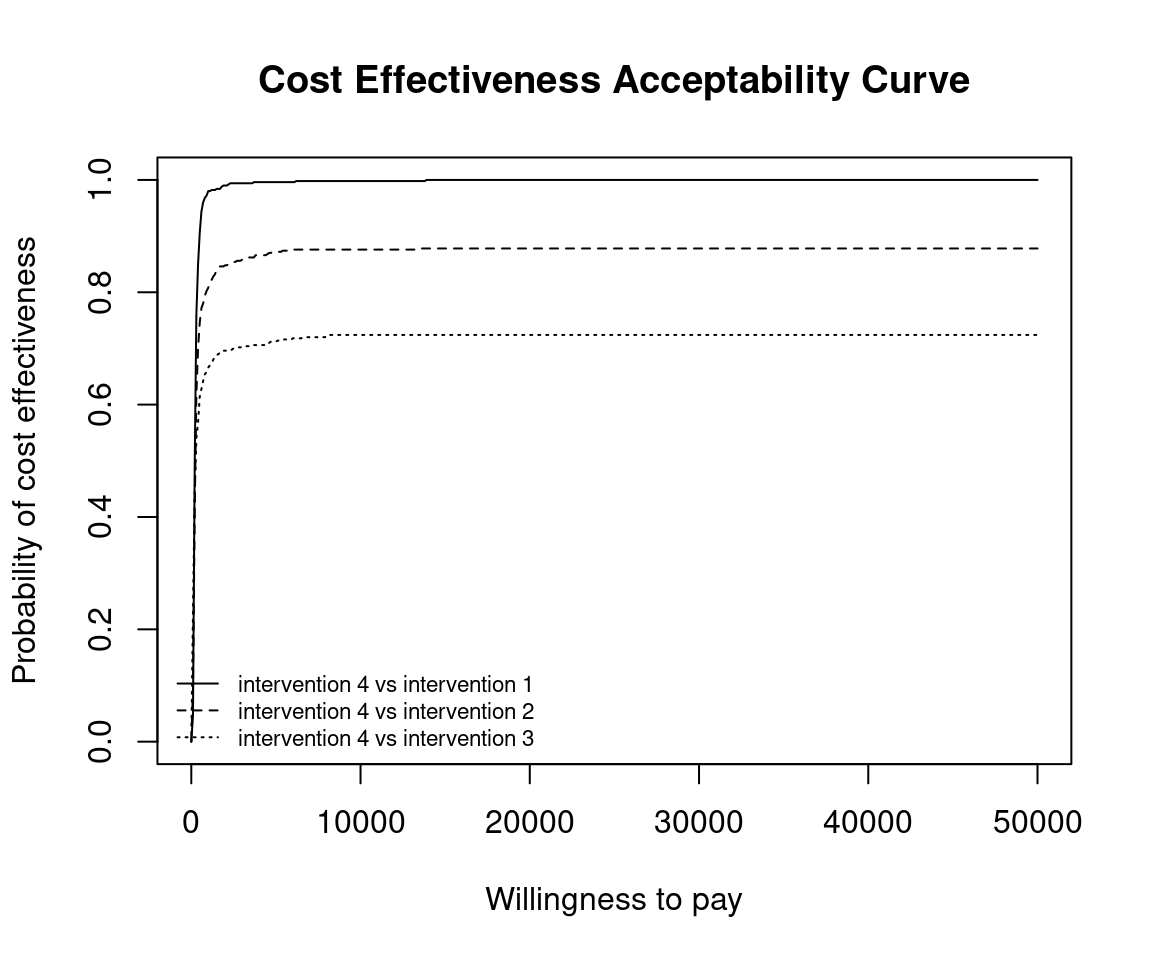
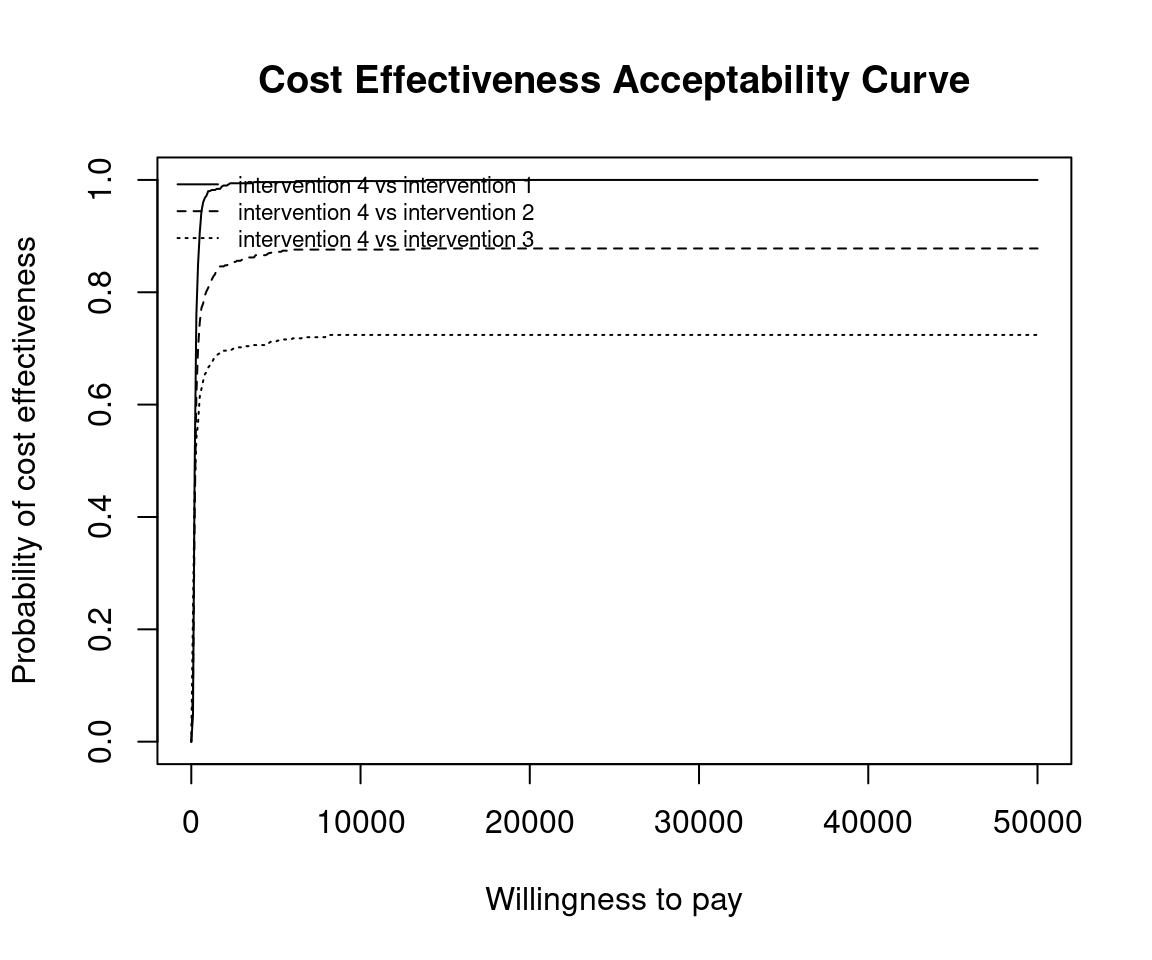
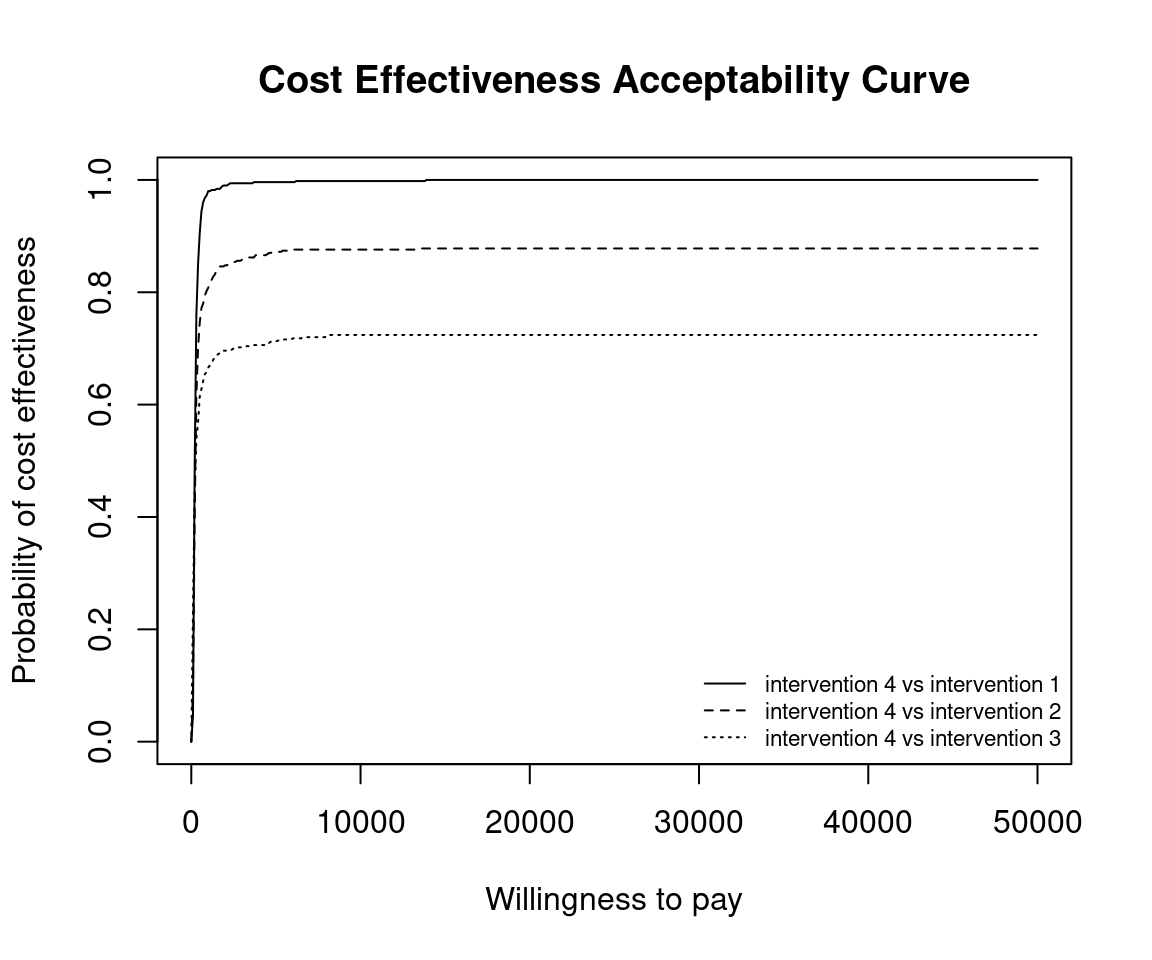
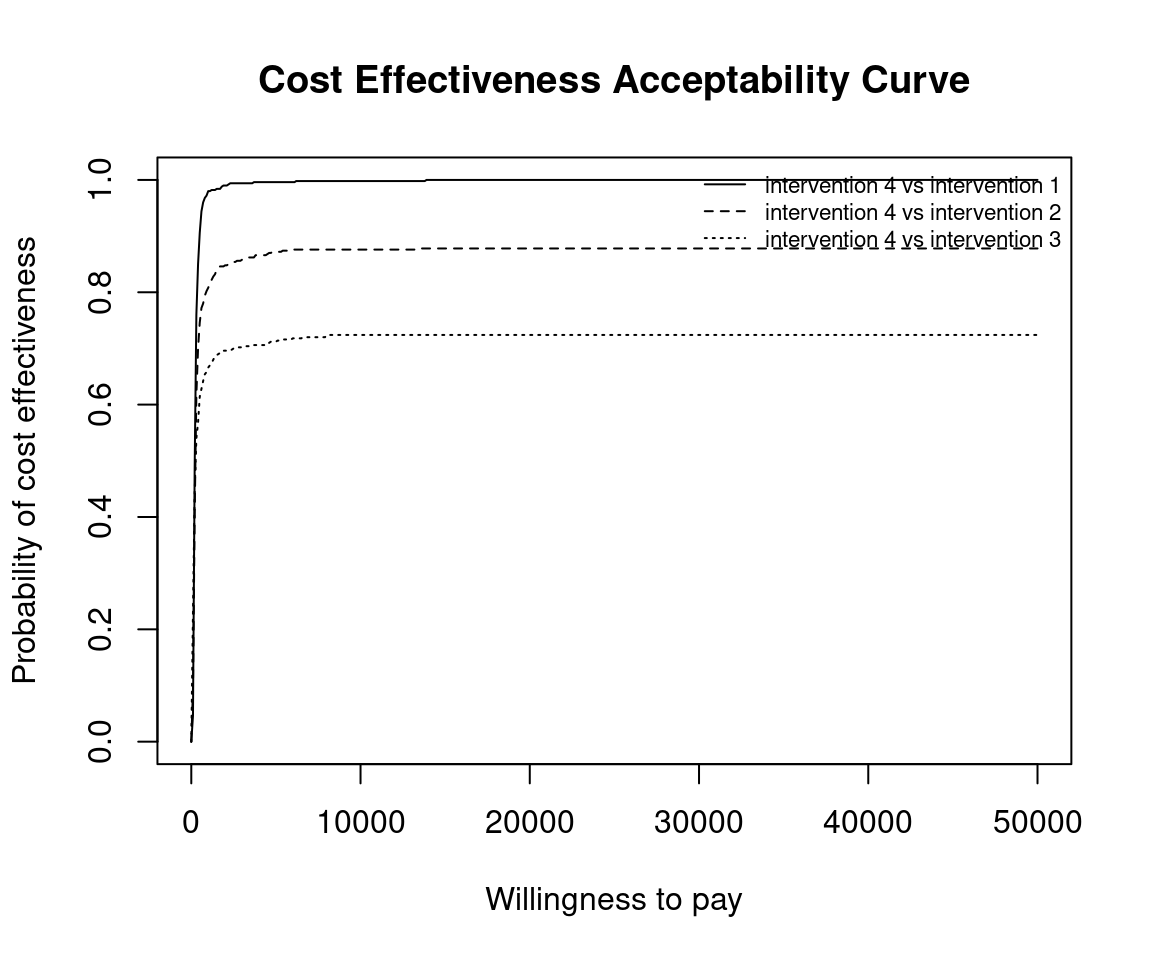

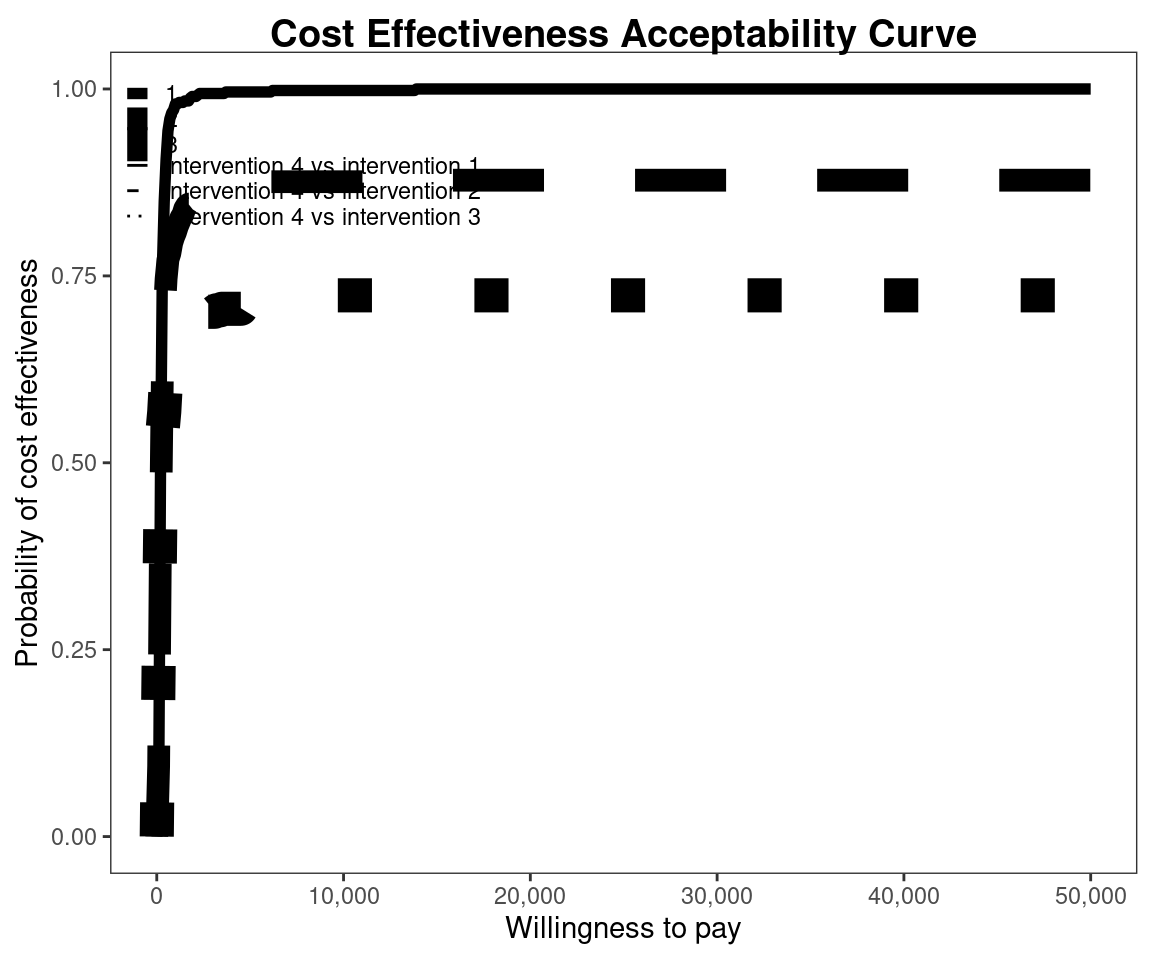
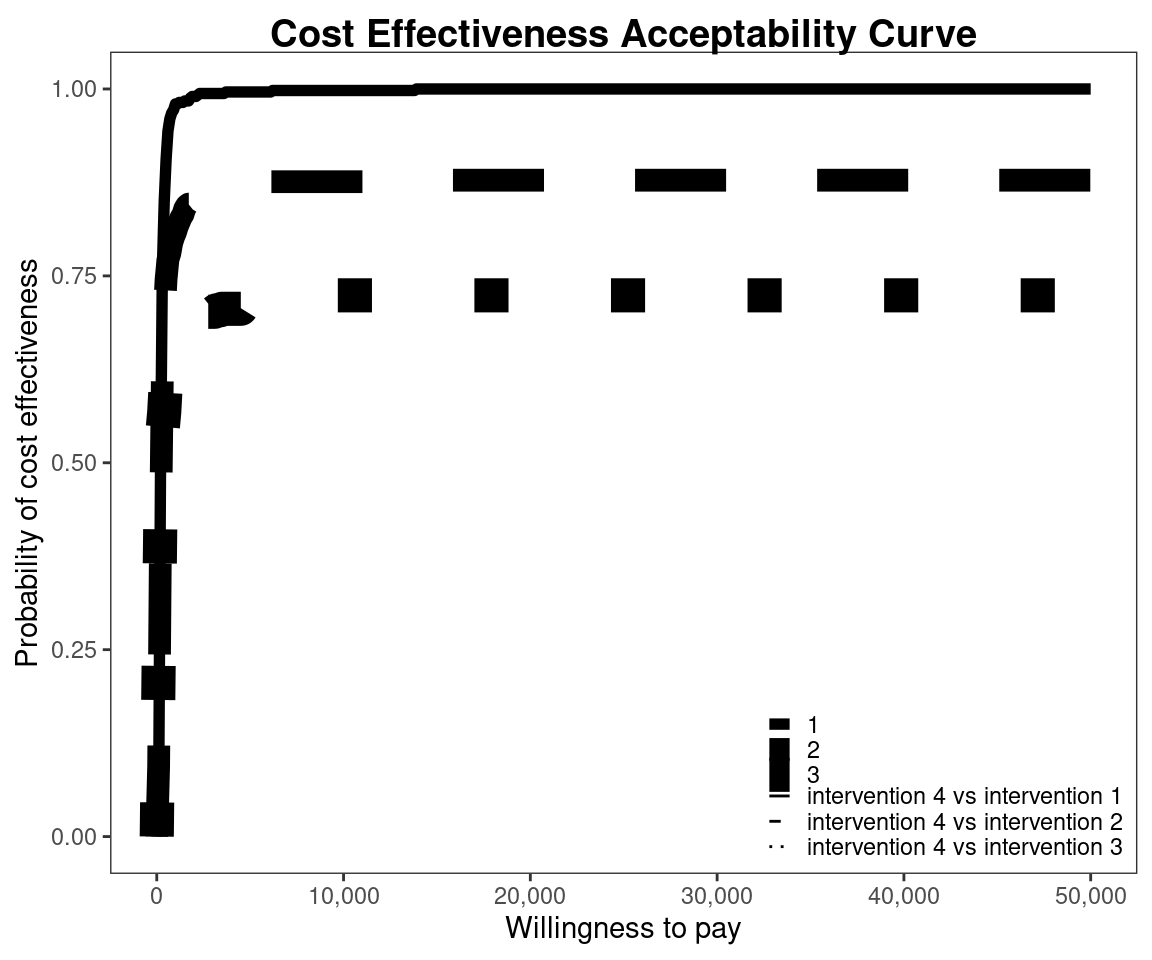
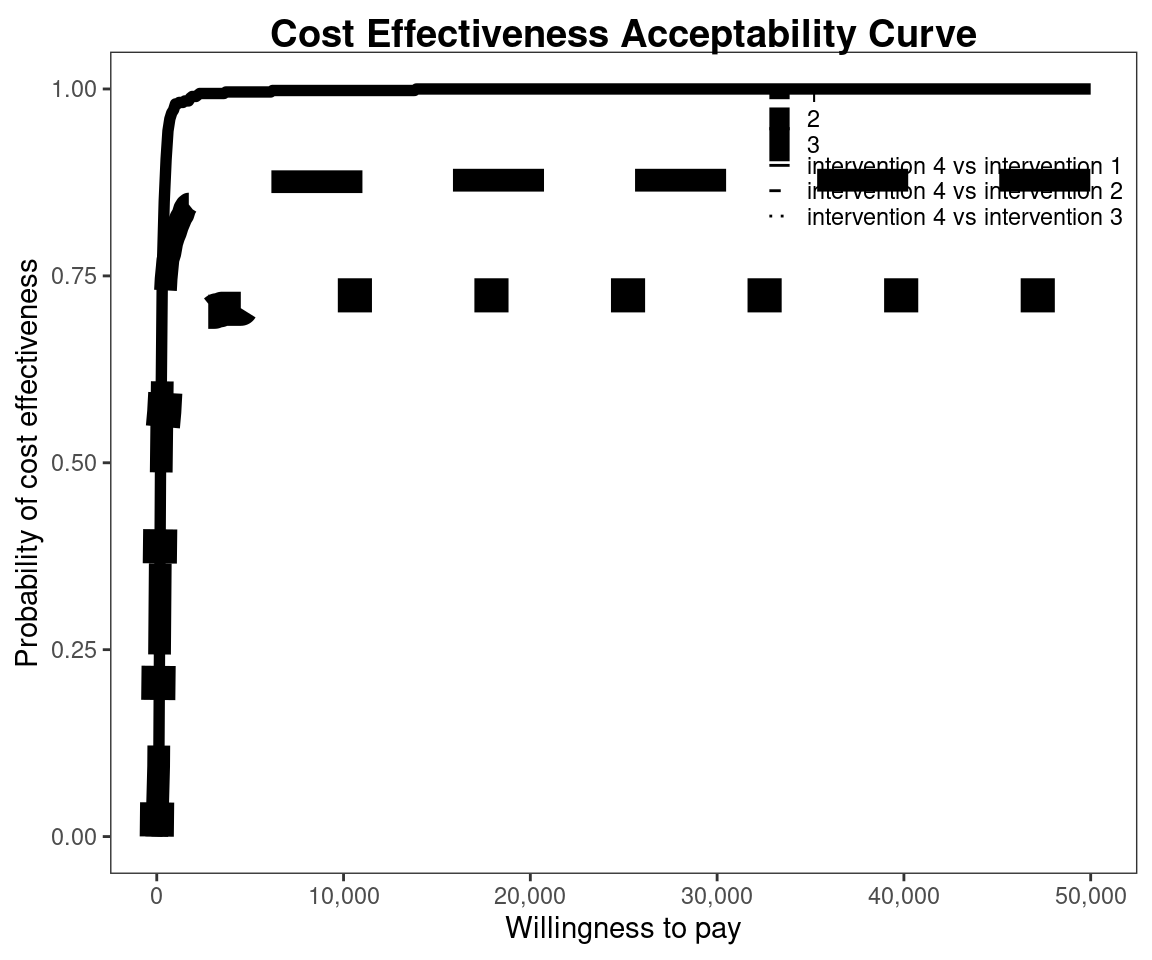
Define colour palette.
Again, without loss of generality, if we assume that we are interested in intervention \(i=1\), the we wish to calculate
\[ p(NB_1 = \max\{NB_i : i \in S\} | k) \]
This can be approximated by the following.
\[ \frac{1}{N} \sum_j^N \prod_{i \in S} \mathbb{I} (k \Delta e_{1,i}^j - \Delta c_{1,i}^j) \]
In BCEA we first we must determine all combinations of paired interventions using the multi.ce() function.
We can use the same plotting calls as before i.e. ceac.plot() and BCEA will deal with the pairwise situation appropriately. Note that in this case the probabilities at a given willingness to pay sum to 1.

